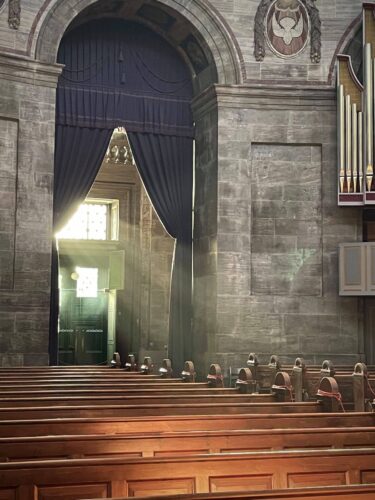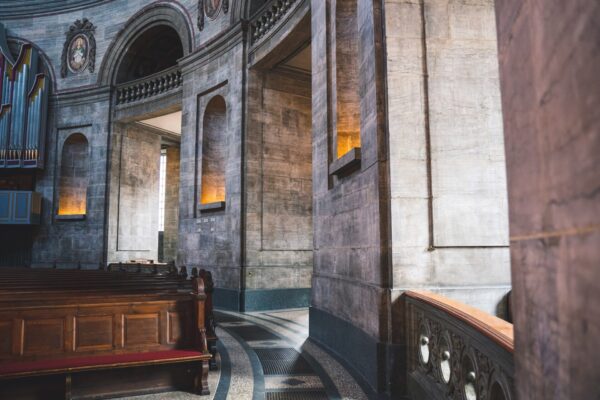Frederiks Kirke
Frederiks Kirke is the most iconic landmark of religious life in Denmark. Moving south from DesignMuseum along the prestigious shopping street of Bredgade (broad street), less than five minutes away lies the most impressive of all the capital’s churches. Frederiks Kirke (aka The Marble Church). During the 17th and 18th centuries, Copenhagen outgrew its medieval boundaries, and the city expanded further to the north.
During this time, King Christian IV was responsible for the building of ( among other things) Rosenborg Castle, The Stock Exchange, the Round Tower, and the characteristic naval housing complex Nyboder, all of which must be considered cultural landmarks of Copenhagen. East of this area plans for further urban development followed during the reign of King Frederik V.
King Frederik V put the Danish architect Nicolai Eigtved in charge of the planning of Frederikstown, a grand and fashionable quarter where a great number of imposing mansions were to be built, including what later became the royal residence: Amalienborg. The center point of Frederikstown was to be a church built in honor of the royal family’s 300 years of reign.
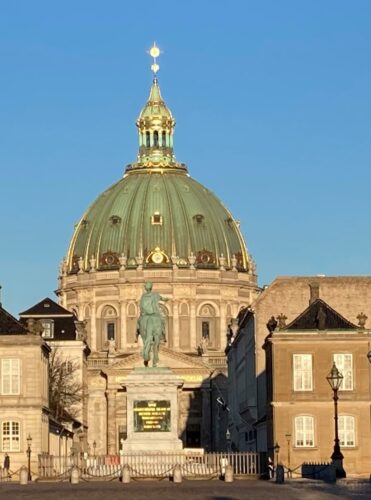
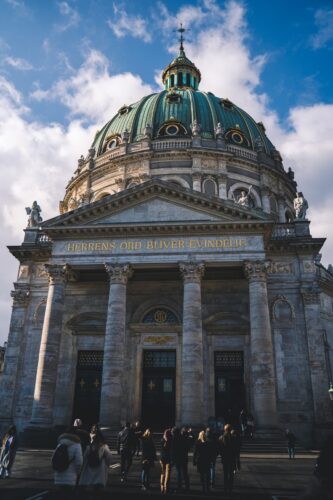
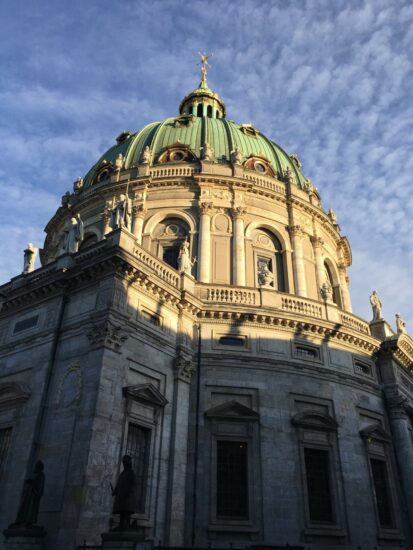
This church was drawn by Eigtved in 1740 and in 1749, King Frederik laid the foundation stone himself amid a great ceremony. After the death of Eigtved in 1754 the plans for the church underwent considerable change at the hands of the French architect Nicolas Henri Jardin. Originally, the construction of the church was to be effected in Norwegian marble. This, however, proved so costly that in 1770, Prime Minister Struensee ordered the project stopped.
Only two years later, however, Struensee was executed and after this time various attempts were made to recommence the building, none of them successful. Thus for one century, the church square contained nothing but a rather picturesque ruin until N.F.S. Grundvig, the Danish pastor and prolific poet (originator of the National High School), and others agitated for the completion of the edifice. These efforts were successful largely due to the financial aid of C.F. Tietgen, a Wealthy and influential businessman who approached the architect professor Meldahl and engaged him to carry out the completion of the church. It was finally consecrated in 19. August 1894.
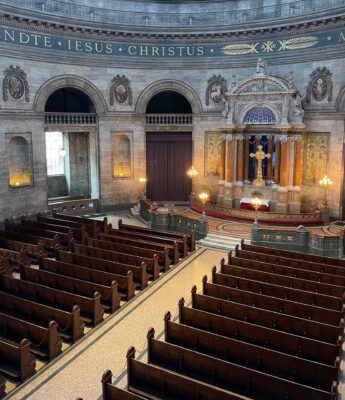
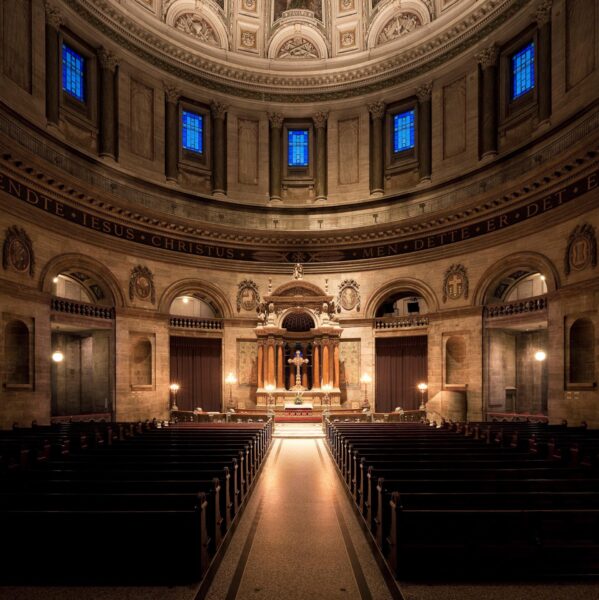

Other notable details are the German woodcarving in the front of the chapel, depicting the Deposition, the German ivory cross in the choir, and the commemorative relief of C.F. Tietgen and his wife from 1920 (by Niels Skovgaard). The church is surrounded by many statues. Those at the street level depict several well-known figures from the Danish church; for example Søren Kierkegaard, the great Danish philosopher and author; Ansgar ‘The Apostle of Denmark; and principal Danish hymn writers such as Kingo, Brorson, and Grundtvig. The statues on the roof terrace are of important figures from church history in general and span from Moses to Martin Luther.
The function of the Marble Church is that of a regular parish church and it is part of the Danish State Church, namely an Evangelical-Lutheran church. Although its official name is Frederik’s Church, among Copenhageners it always bears the name connected with its most prominent feature: the Marble Church. More

